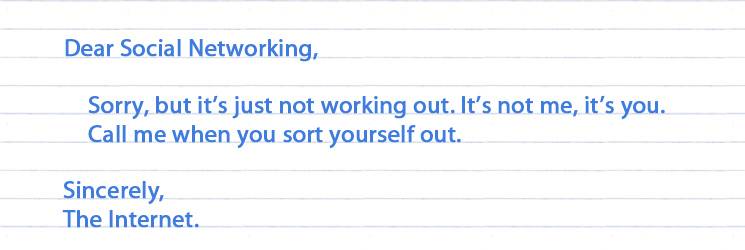New social networks are cropping up all over the Internet, spawning like rabbits keeping warm during a polar vortex.
Jelly, the highly-anticipated app cofounded by Twitter’s Biz Stone, was finally revealed on Tuesday. Turns out, it’s just another social application that its founders claim is “a new way to search.” With Jelly, users connect with the friends and followers they’re already connected to on existing social networks and then upload a photo just to ask: “What is this?”
Jelly adds another icon to the social bucket on our mobile devices, and asks us all to rely on our friends to provide trustworthy answers. Basically, it’s Quora meets Pinterest.
Even Forbes recently launched its own “mini social network”. The company’s so-called “Stream” lets readers save and share articles exclusively using the Forbes iOS application. Stream is a timeline comprised of Forbes articles, publicly or privately shared by and to Forbes readers. Of course, readers can in turn share articles directly to other social media platforms like Facebook, Twitter and Tumblr.
The Saturation Of Mobile Breeds New Apps

In the heyday of desktop computers, there was clear competition driving our social network use. Facebook usurped MySpace by infiltrating college campuses, and quickly took over international markets becoming the largest, and most addictive, social platform.
But society has finally reached smartphone ubiquity, fueling the ability and desire to create and distribute social apps that give users one more application they have to check.
Nearly all social apps rely on the information databases Facebook and Twitter have already built. Each time we download a new social app, we’re given the option to sign up with social login, and are then able to share the activity on the accounts we signed up with in the first place.
Many apps have suffered the rise and fall of consumer interest—a flashy new product grabs attention for a moment, and the number of signups propel the app to the top of any App Store. But as consumer interest wanes, usually caused by both the quality of posts and the increased distribution of time spent on other networks, apps once heralded as “the next great social platform” can quickly become obsolete.
Take Path. Path is an exclusive network, built so that information can only be shared with a select group of close friends. It relies on Facebook’s social graph and users’ Twitter accounts to find and connect with individuals. After shady invite practices spammed Facebook users, the original social network blocked Path’s “find friends” feature. The app that was once valued at one billion dollars has plummeted in both popularity and use—the end result of what appears to be the lifecycle of a social app.
The OG Social Network
Remember when you signed school yearbooks with your phone number? The antiquated address book has reinvented itself as the new social network as messaging applications threaten to overthrow the stalwart likes of Facebook.
It’s likely the names and numbers stored in your phonebook belong to actual friends. Which is why apps that access your address book are rising in popularity.
Snapchat, 2013’s messaging darling, has created a social network that is both a visual and private way to interact with friends. The simple ephemeral messaging app found its way into smartphones—and teens’ hearts—everywhere, tapping into every growth trend on the Internet by capitalizing on the data stored in our contact list.
Although the app has been fraught with controversy, mainly as the subject of a massive data breach that exposed over four million Snapchat user phone numbers, people will continue to use their 10-digit identities as friend-finding features. It’s just too easy not to.
Is Consolidation Possible?
Continued innovation prevents services from monopolizing, but for social, it arguably already exists. Most of our friends can be found on Facebook or Twitter, and if nothing else, we can send them a text message.
At the heart of it, social networks are built for connecting people, and human nature drives us to continue looking for the best possible way to do that.
Developers and founders who want to create the best way to communicate will continue to build apps that rely on mass consumption to survive.
But if there’s one thing driving consolidation and the desire to pare down our platforms, it’s time. Give me a reason to give you my time, and you’ve built something worth using. Otherwise, you’ve joined one of the many apps that quietly pass into the Internet’s ether as empty networks—barren deserts filled with updates no one ever sees.
Lead image via Jelly, other image via SeanMcEntee on Flickr





















